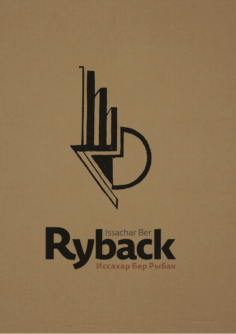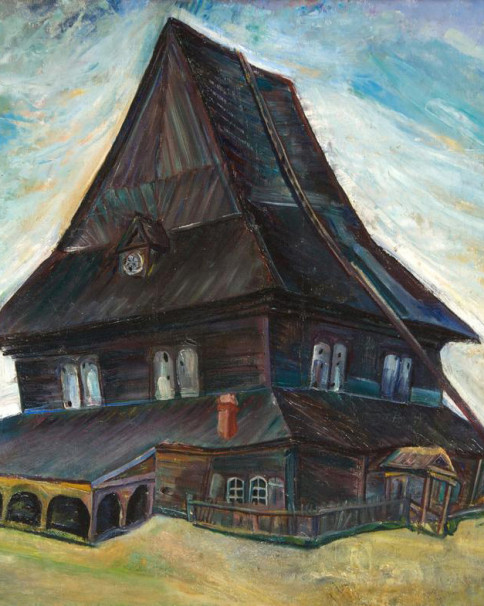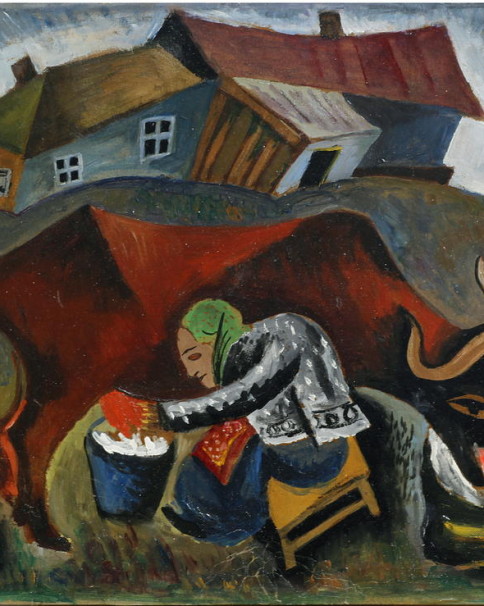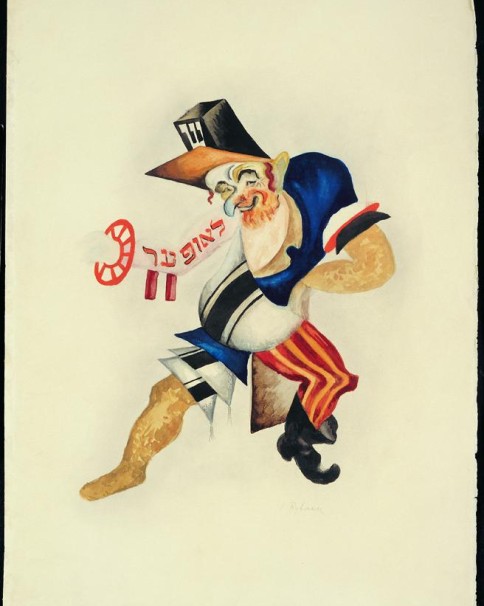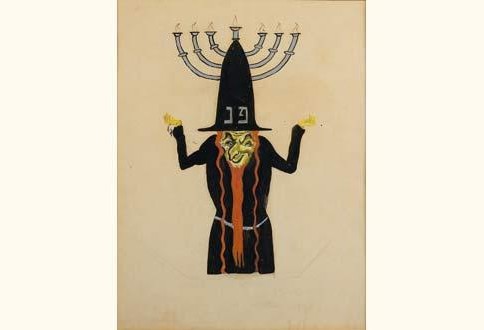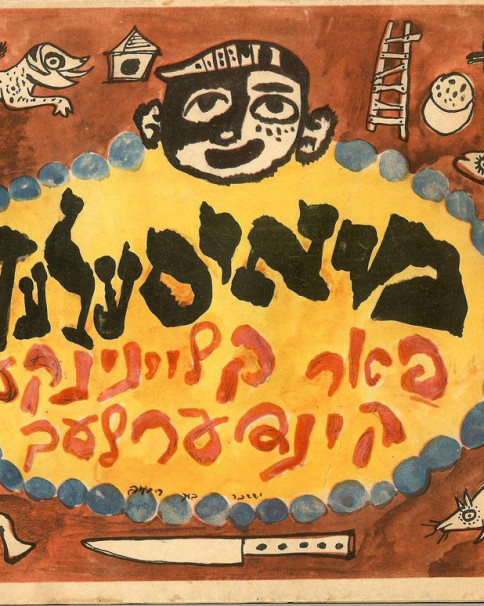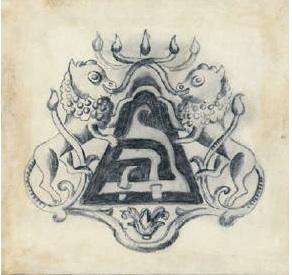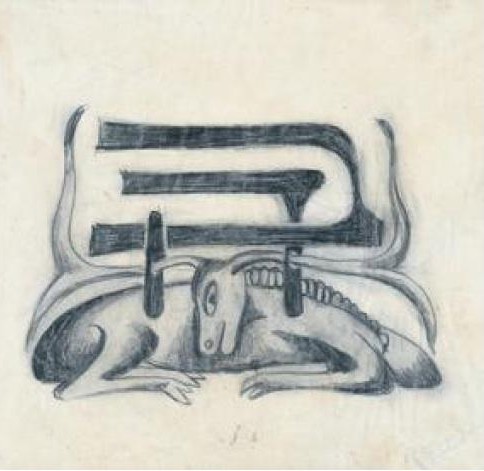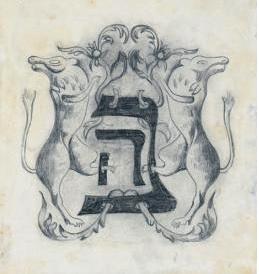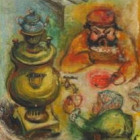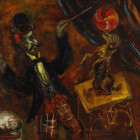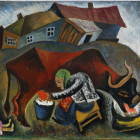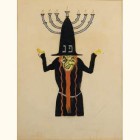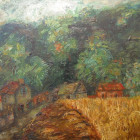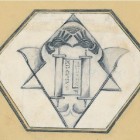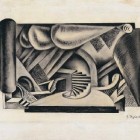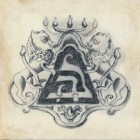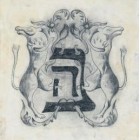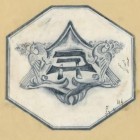1897 – 1935 Ryback visited the art school in Kiev until 1916. He joined a progressiv group of painters and was under the influence from advocates of a modern Jewish literature such as David Bergelson and David Hofstein. The painters Alexander Bogomazov and Alexandra Exter was in Kiev at the time and he was educated by them in 1913. In 1916 El Lissitzky and Ryback was given the task to make Jewish art memorials of Schtetls from Ukraine and Belarus. When he participated in an exhibition of Jewish paintings and sculptures in Moscow the spring 1917, his works was especially recommended. During the October Revolution in 1917 he took part in multiple activities to redefine avantgarde Jiddish culture and therefore went to Moscow. After his father was killed by Petljuras soldiers in the Pogroms in Ukraine he fled in April 1921 to Kaunas and in October 1921 he obtained a visa for Germany. Until 1924 he was in Berlin. He was member of the Novembergruppe and exhibited his cubistic pictures at both the Berliner Secession and the Juryfreien Kunstausstellung. He also illustrated three small kiddish fairy tale books for Miriam Margolin. His Shtetl-litographies was published in 1923 by Schwellen-Verlag. At the time the Jewish education organization World ORT was situated in Berlin and he made the draft for its logo. In 1924 he tried again to work in the Soviet Union decorating scenes at Yiddish theaters. In 1926 he emigrated to Paris and did not turn back to Russia. I 1928 he had a separate exhibition in the „Galerie aux Quatre Chemins“ and in 1929 in the „Galerie L’Art Contemporain“. His style of painting had turned to the expressionistic colouring of the School of Paris in the interwar period. Further exhibitions followed at galleries in The Hague, Rotterdam, Brüssel and Antwerpen. In 1935 he travelled to the opening of his exhibition in Cambridge. He did not live to see the retrospective exhibition in Paris arranged by Georges Wildenstein. Rybak was contemporary of the Jewish-Russian artists Natan Issajewitsch Altman, Boris Aronson and Marc Chagall who worked with handing down the Jewish tradion in modern art. Most of the works he left behind is in Museum Ryback in Bat Yam in Israel.
